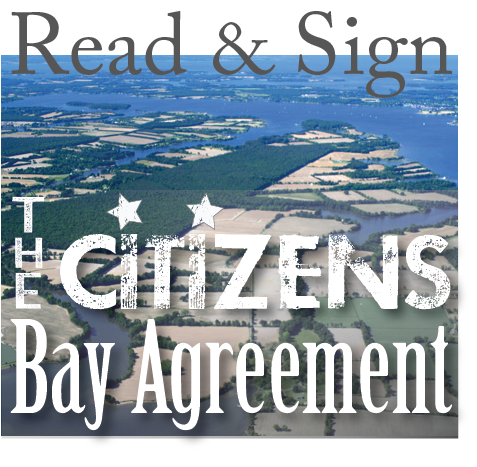Chesapeake Bay Action Plan
After decades of effort, the voluntary, collaborative approach to restoring the health and vitality of the Chesapeake Bay— the largest estuary in the United States—has not worked and, in fact, is failing.
A diverse group of 57 senior scientists and policymakers have joined forces to save the Bay. This is our plan.
A New Day for the Anacostia River
(Posted by Brooke DeRenzis and Walter Smith.)
The Anacostia watershed is one of the most densely populated watersheds of the Chesapeake Bay drainage basin. Like many urban watersheds, it is severely polluted by stormwater which runs off of roofs, roads, driveways and parking lots—picking up trash, oil, and bacteria along the way—and into the river and its streams. Although urban and suburban development accounts for only 9 percent of the Chesapeake Bay watershed’s land use, the Bay watershed is becoming more developed. In fact, according to the Chesapeake Bay Program, stormwater runoff is the Bay’s only major source of pollution that is increasing.
Turning Waste to Energy…And Back to Waste Again
(Posted by Michele Merkel.)
Here’s an idea: When the whole world is becoming more aware of the many environmental ills and human health impacts from burning fossil fuels to make electricity, when we’re growing tired of asthma rates, air pollution and noxious odors, when there is a concerted effort to make a responsible move towards clean energy systems where limitless wind and sunlight provide pollution-free energy, let’s ignore all of that and put our resources and effort into coming up with something else to burn for our electricity. How about chicken manure? That’s right, now we’re going to burn chicken poop because our political leaders won’t make the Delmarva poultry giants – the Tysons and the Perdues – figure out what else to do with their mountains of unsustainable waste.
New Chesapeake Bay Data Tool
(Posted by David Burke.)
Chesapeake Commons, a new web resource, now provides informative maps and data about nearly any type of information relevant to the Chesapeake Bay watershed. The Chesapeake Commons is made available through the sponsorship of the Chesapeake Bay Funder’s Network. CBFN’s new data tool is powered by Rhiza Labs’ Insight software that makes it easy for users to store, map and analyze whatever data is of interest to them.
Chesapeake Bay Report Card: “Don’t Bring Me No Bad News”
(Posted by Bill Dennison.)
This year’s Chesapeake Bay report card, produced by EcoCheck, a partnership between NOAA and the University of Maryland Center for Environmental Science, was released last week. The overall report card score was a C-, based on data collected throughout 2010. Unfortunately, this report card score declined from the 2009 report card which was a C, and this was the first time the score declined since 2004. Of the fifteen reporting regions, only two had higher scores than last year, but nine had lower scores, leaving four with no change.
A New Day for the Anacostia River
(Posted by Jeanne McCann.)
What are you doing Monday, May 2, 2011? How about joining a mass of D.C. dignitaries for the release of D.C. Appleseed’s latest report, A New Day for the Anacostia: A National Model for Urban River Revitalization?
“No Farms No Food”: No Regs?
(Posted by Howard Ernst.)
The truck ahead of me had a constellation of conservative bumper stickers. The kind of stuff you would never see on a Prius. Most of them were familiar conservative messaging, the obligatory National Rifle Association sticker in the rear window, a slogan against taxation (even with representation), but there was one sticker in particular that glared at me from the vehicle’s rear end. It simply stated, “No Farms, No Food.”
Arsenic With a Side of Chicken
(Posted by Kathy Phillips.)
Arsenic is a poison. It’s a metalloid or ‘heavy metal’. It is a carcinogenic. Its use in pesticides has been banned in the U.S. since 1988. But when it comes to food production, it is quite allowed.
Chesapeake Bay Pollution Quiz
(Posted by Senator Gerald Winegrad.)
You may have bombed the SATs, but here’s a chance to redeem yourself.
We are senior Chesapeake Bay scientists and policymakers from Maryland, Virginia and Pennsylvania who have concluded that after decades of effort, the voluntary, collaborative approach to restoring the health and vitality of the largest estuary in the United States has not worked and, in fact, is failing. Our group unanimously recommends that all states draining into the Chesapeake Bay adopt our 25 action items in their Watershed Implementation Plans (WIP) and implement them to improve the Bay’s water quality and to meet the requirements of the Clean Water Act.
Sign up for news & updates from Patuxent Riverkeeper
